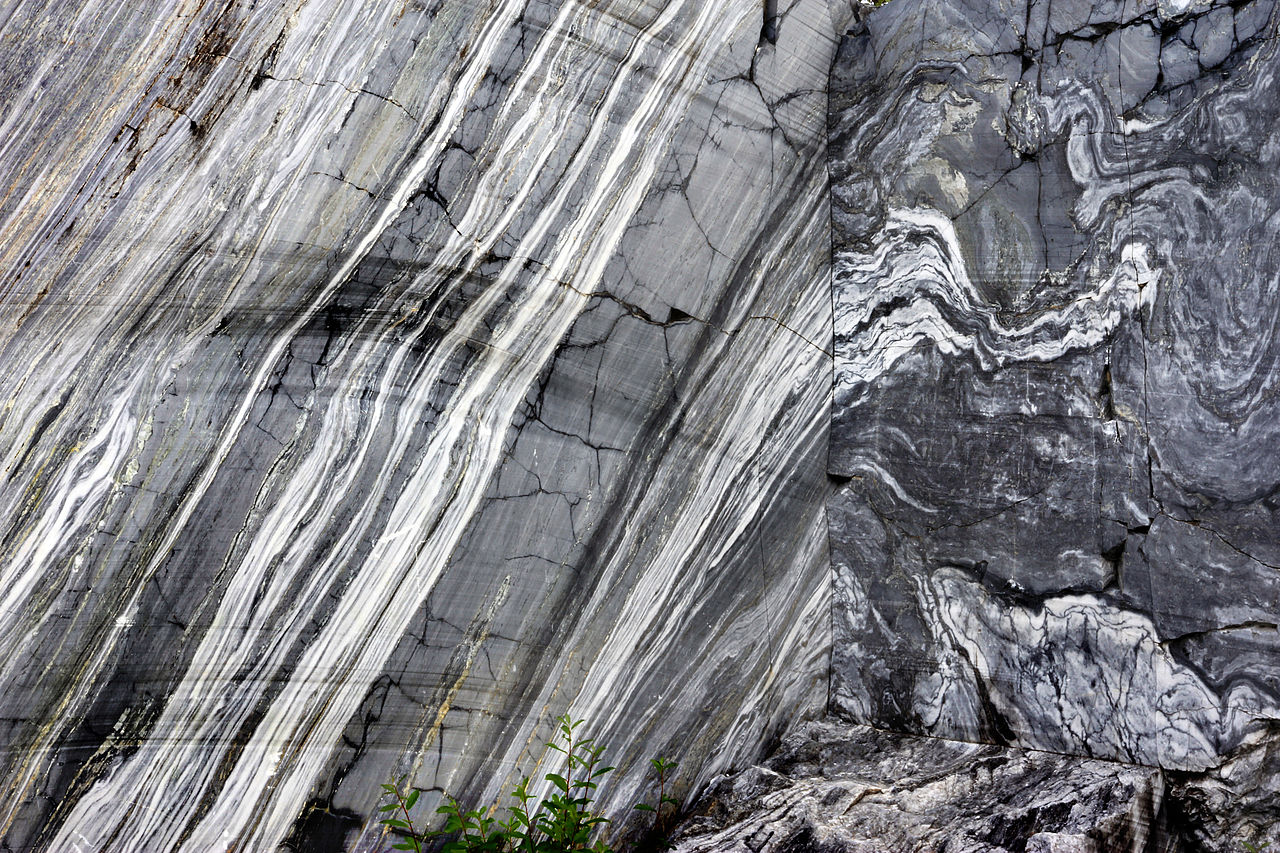
Marble is compressed shells and bones. Its adventure starts on the seabed where these calciums deposit and eventually become limestone. Then one of two forces, volcanic activity or tectonic plate movement, compress and heat the limestone changing its molecular structure. It is still calcium carbonate but has formed crystals that often shine. The Greek word for marble, mármaro, means sparkle. The colors in marble are from the other earth chemicals that leach into the stone as it is being formed: iron, copper, carbon, magnesium, etc.
Note that there are other calcium carbonates that are formed by waters that drip or flow such as travertine, calcite, and onyx. These are all in the marble family. To test if a stone is a marble or one of its cousins put a few drops of muriatic acid on the stone. If it fizzles it is most likely a calcium carbonate. (Do not breathe the fumes. The acid is neutralized with water.)
